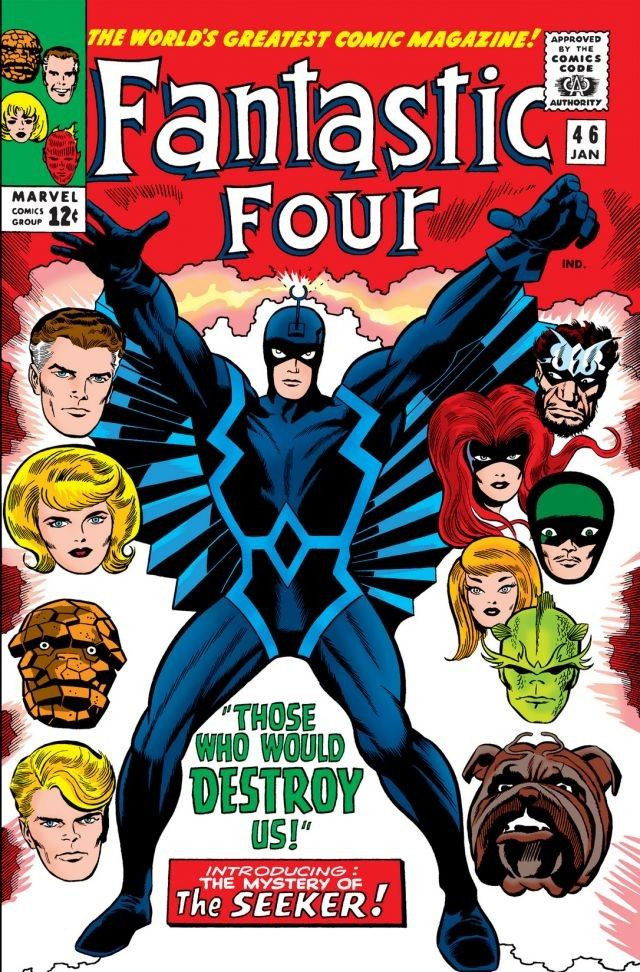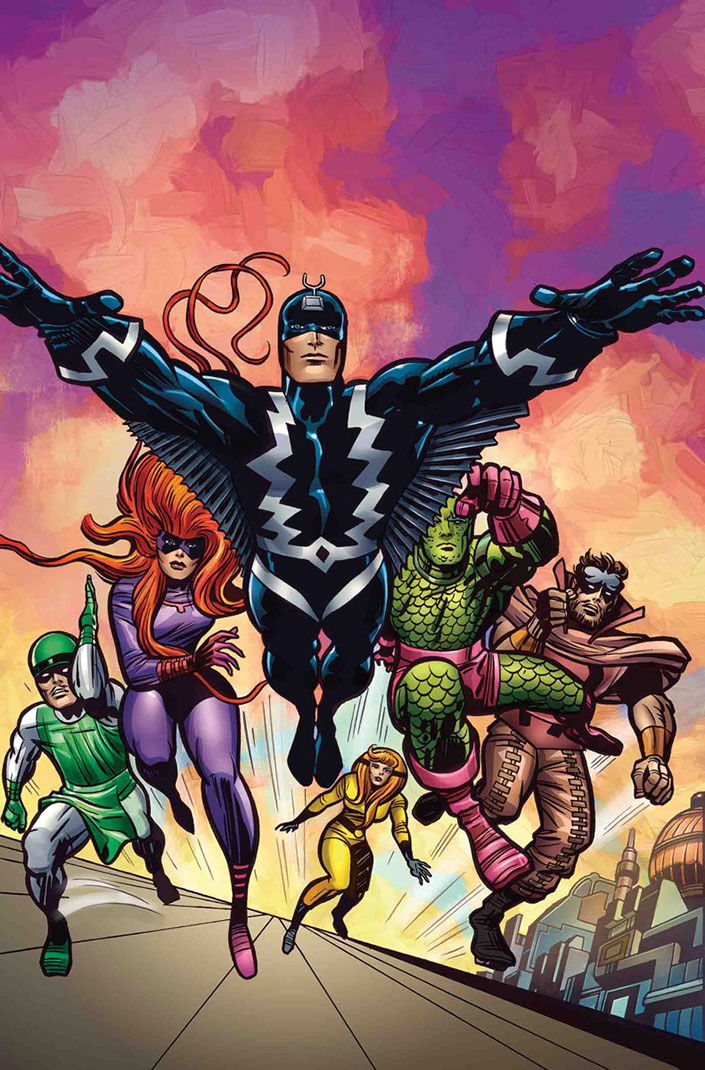
The story goes that during the 2010s, Marvel decided to push the X-Men to the side in favor of the Inhumans, as they preferred properties for which they had full screen rights at the time. Their attempt to position the Inhumans as replacements for the X-Men didn’t pay off and, worse, gave the public a misleading image of this superhuman race, which is not comprised of mutants. This effort was further hampered by the failure of the 2017 Inhumans TV series.
However, a look back at their origins in comic book titles reveals that the Inhumans are quite different from the X-Men. Originally conceived with Jack Kirby’s psychedelic aesthetic, they were weirder, their powers crazier, and their stories more otherworldly.
It all started twenty-five thousand years ago when Kree scientists, drawn to Earth beings’ incredible potential, experimented on them to create a superhuman army. These experiments ultimately resulted in the development of the Inhumans, a species with superhuman strength and long lifespans.
Forgotten by their creators, the Inhumans developed their own civilization on Attilan, also known as ‘The Great Refuge,’ an island originally located in the North Atlantic Ocean. The community has been relocated several times since then, including to the Himalayas and the Moon. The discovery of a rare mineral called Terrigen altered the course of Inhuman culture. When used in gaseous form, it triggers Terrigenesis, a rite of passage that grants Inhumans unique superpowers.
Generally speaking, the Inhumans’ stories mostly focus on the adventures of the Inhuman Royal Family, led by the dangerous and stoic king, Black Bolt. Each member was crafted with striking, unique traits that make them stand out. Black Bolt’s voice creates destructive shockwaves, making his silence both a power and a burden. Medusa controls her fabulous hair psychokinetically. Maximus, Black Bolt’s brother, is a mad genius. Crystal, Medusa’s sister and a substitute member of the Fantastic Four, manipulates the elements. Gorgon, their cousin, has immense strength and hooves for feet. Triton can survive underwater, and Karnak, who didn’t undergo Terrigenesis, can detect weak spots in anything, making him a formidable strategist. And let’s not forget Lockjaw, their loyal pet, who can teleport anywhere in the universe.
Created by Stan Lee and Jack Kirby, they were introduced in Fantastic Four #45 (December 1965), though two Inhumans had already appeared earlier in the title — Medusa and Gorgon in issues #36 and #44, respectively.
While there is always discussion about who did what when it comes to Kirby and Lee, they both discussed the creation of the Inhumans in past interviews, making it clear that there was no particular goal or intention behind their creation.
As Lee explained in 1967, “These things aren’t always planned. They grow.” The writer explained that they first created Gorgon, who was introduced as a villain. As they liked the character, and Kirby kept using him, this led them to think about his origins and where he came from. From there, Kirby went on to create more Inhumans.
Talking specifically about Black Bolt, Lee recalled “We decided, well, there was no need for them all to be villainous. […] I think we did have in mind that Black Bolt would eventually be a heroic type. And again, we always try to give a character a hangup so his hangup is he doesn’t speak. Now, I’m quite sure he’s the first non-speaking superhero or supervillain, we don’t know quite yet, in history.”
Around two years later, Jack Kirby discussed in an interview published in The Nostalgia Journal (#30-31) why he came up with the Inhumans and simply said, “I created the Inhumans because the competition was coming up in the field—so I thought we would try a new concept: The family concept. So, when someone came up with one superhero, we would slap them with five. As simple as that.”
It’s difficult to know if the Inhumans were on the minds of Kirby or Lee when Medusa made her debut in Fantastic Four, as a member of the Frightful Four, a sort of evil version of the FF, with Wizard, Sandman, and Paste-Pot Pete. She was presented as an impressive foil for the First Family and would become Black Bolt’s love interest following the introduction of the Royal Inhumans.
Writer Mark Alexander explored other avenues and stories about the origins of the Inhuman Royal Family in Jack Kirby Collector #39, which could have some links with the arrival of the Batman TV Series. “Anticipating the inevitable glut of superhero comics it would trigger,” Lee would have asked Kirby to create new characters to fight off the competition. The industry was preparing for a new interest in superheroes by creating new products/characters.
According to Alexander, it was also reported that the iconic Addams Family was Kirby’s primary inspiration for the Royal Family while Black Bolt would have been, at the time, designed to look “Batman-esque.”
While these are speculations, Kirby has, at the very least, addressed the thought process for the superheroes’ costumes in his Nostalgia Journal interview. As he said, “You can’t engage in action in a business suit so I always give them a skin-tight uniform with a belt.” He added about the Inhumans, “Black Bolt I began to dress up with lightning insignias. Karnak with the judo-type uniform, it’s almost Japanese Oriental and half-Egyptian, and Medusa with her hair.”
Since their creation, the Inhumans’ history has become increasingly complex, filled with coups and intergalactic wars, marriages and divorces, relocations and cultural integrations, and alliances and conflicts with many other superheroes. For a long time, the Inhumans occupied their own unique corner of the Marvel Universe.
However, their stories were derailed by behind-the-scenes decisions that attempted to position them as the new X-Men—which they could never be. Despite these challenges, the Inhumans remain a fascinating and integral part of Marvel Comics, distinguished by their unique heritage and compelling characters and you can read all about it with our Inhumans Reading Order.

